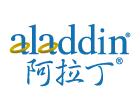|
| |||||||||||||||||||||||||||||||||||||||||||||||
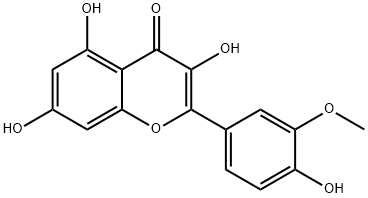
CAS号:480-19-3
|
英文名称:Isorhamnetin
分子式
C16H12O7
分子量
316
EINECS号
207-545-5
MDL
MFCD00017310
Smiles
InChIKey
乙二醇化学百科
基本信息
物化性质
安全信息
生产及用途
异鼠李素(Isorhamnetin,Iso)是从银杏、沙棘等药用植物中分离提纯的黄酮类化合物, 亦广泛存在于其他多种植物的花、果实和叶中。有较好的抗肿瘤、抗心肌缺氧、缺血,缓解心绞痛,抗心律失常,治疗冠心病和高血压,清除氧自由基,降低血清胆固醇,保护心血管,促进血流通畅等多种生物学效应,广泛应用于临床。黄色针晶 (稀甲醇),mp312℃(分解)。UVλmax (MeOH) nm: 257,370;(MeOH/NaOMe): 272,330,427(分解);(MeOH/ AlCl3): 267,304 (sh),360,428。IRvmax (KBr)cm-1: 3242,2940,1657,1616,1603,1560,1508,1244,1211,1167。EIMS m/z: 316,315,153,151。1HNMR。 本信息是由Chemicalbook的王家芳编辑整理。(2015-09-06) 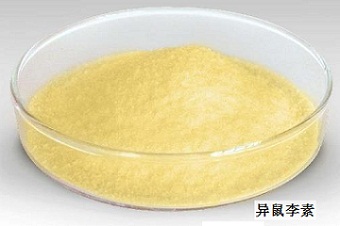 图1为异鼠李素异鼠李素可从以下植物中提取: 1.胡颓子科:植物沙棘Hippophae fhamnoides L.的果实。 2.萝藦科 (Asclepiadaceae):台湾眼树莲Dischidia formosana maxim.全草。 3.紫葳科 (Bingoniaceae):黄钟花 Tecoma stans H. B. K.花。 4.卫矛科(Celastraceae):微缺美登木Maytenus emarginata Willd. 叶。 5.菊科(Compositae):长叶山金车Arnica longifolia D.C.Eaton花;黄花蒿 Artemisia annua L.叶,茎:茵陈蒿 Artemisia capillaris Thunb. 6.葫芦科 (Cucurbitaceae):喙果绞股兰 Gynostemma yixingense C. Y. Wu et S. K. Chen地上部分。 7.豆科 (Leguminosae):槐Sophora?japonica L.花蕾;红车轴草 Trifolium pratense L.花瓣。 8.无患子科(Sapindaceae):车桑子 Dodonaea viscosa (L.) Jacq.花。 9.柽柳科(Tamaricaceae):西河柳Tamarix chinensis Lour.枝。 10.红豆杉科(Taxaceae):短叶红豆杉Taxus brevifolia Nutt.叶。 11.椴树科(Tiliaceae):布渣叶Microcos paniculata L. 12.香蒲科(Typhaceae):长苞香蒲Typha angustata Bory et Chaub.;狭叶香蒲 Typha angustifolia L. 13.伞形科(Umbelliferae):秦岭柴胡Bupleurum longicaule Wall. ex DC. var. giraldii Wolff全植物;水芹Oenanthe javanica. 14.蒺藜科(Zygophyllaceae):甘青白刺Nitraria tangutorum Bolor种子。1.扩冠作用。增加冠脉血流量。 2.抑制血小板聚集。 3.抗止血作用。抑制某些止血成分的作用。 4.抗肝毒成分。对CCl4和GalN诱导的大鼠肝细胞中毒有抑制作用。5.V9Z:调节雄性植物的繁殖能力。 6.降低大鼠血清和肝脏的胆固醇浓度。 7.抗脂质过氧化。降低大鼠肝脏中硫代巴比妥酸反应物质TBARS的量。 8.抗肿瘤作用,异鼠李素主要是抑制肿瘤细胞增殖,诱导细胞凋亡、抑制信号转导等。,异鼠李素具有显著的抗乳腺癌作用,其作用机制与抑制细胞的增殖通路及促进细胞的凋亡有关。沙棘果渣中异鼠李素提取方法 用超声波法提取异鼠李素的原理是超声在溶剂和样品之间产生空化作用,导致溶液内气泡的形成、增长、爆破压缩,有助于溶质扩散,提高目标物从固相转移到液相的传质速率。超声波法可大大缩短提取时间,提高有效成分提出率及原料利用率。 精确秤取1.0 g 左右的沙棘果渣→加入提取液→超声波提取→过滤→滤液定容→异鼠李素 沙棘果渣中异鼠李素的最佳工艺为:在50℃条件下,超声频率40 kHz,用V 乙酸乙酯︰V95%乙醇为4:6 的提取液超声提取2 次,每次1 h,料液比为1:25。以此方法提取所得异鼠李素含量可达5.09 mg·g-1。 化学合成法:以槲皮素(Ⅰ)为起始原料经乙酰化,苄基化和甲基化反应分别获得槲皮素五乙酸酯(Ⅱ)和4’,7-二-O-苄基槲皮素(Ⅲ),4’,7-二-O-苄基槲皮素三乙酸酯(Ⅳ)和4’,7-二-O-苄基-3’-甲基槲皮素(Ⅴ)中间体。化合物(Ⅴ)经苄基化反应则得到异鼠李素(Ⅵ)。Isorhamnetin 是从中草药沙棘 (Hippophae rhamnoides L.) 中提取的类黄酮化合物。Isorhamnetin 可通过直接抑制 MEK1 和 PI3K 来抑制皮肤癌。
Isorhamnetin is a plant flavonoid that occurs in fruits and medicinal herbs. Isorhamnetin binds directly to MEK1 in an ATP-noncompetitive manner and to PI3-K in an ATP-competitive manner. In vitro and ex vivo kinase assay data show that Isorhamnetin inhibits the kinase activity of MAP/ERK kinase (MEK) 1 and PI3-K and the inhibition is due to direct binding with Isorhamnetin. Isorhamnetin inhibits the Akt/mTOR and MEK/ERK signaling pathways, and promotes the activity of the mitochondrial apoptosis signaling pathway. The inhibitory effects of Isorhamnetin on breast cancer cells are determined using the CCK-8 method. Isorhamnetin inhibits the proliferation of numerous breast cancer cells (IC 50 , ~10 µM), including MCF7, T47D, BT474, BT-549, MDA-MB-231 and MDA-MB-468, whereas less inhibitory activity is observed in the MCF10A normal breast epithelial cell line (IC 50 , 38 µM).
Photographic data shows that Isorhamnetin treatment suppresses tumor development in mice. The average volume of tumors in untreated mice increases over time and reaches a volume of 623 mm 3 at 4 weeks post-inoculation; however, at this time, in mice treated with 1 or 5 mg/kg Isorhamnetin, the average tumor volume is only 280 or 198 mm 3 , respectively. At the end of the study, Isorhamnetin treatment (1 or 5 mg/kg) reduces tumor weight compared with the untreated control group.
上下游产品
相关产品
|
|||||||||||||||||||||||||||||||||||||||||||||||
|
本网站展示的所有产品仅用于工业制造、技术研发、科学研究,所有产品非药品不可食用,依据国家相关法规及平台管理要求,购买相关危险物品应取得有效的资质、资格条件。 参考《应急管理部等多部门关于加强互联网销售危险化学品安全管理的通知 (应急〔2022〕119号)》 和《互联网危险物品信息发布管理规定》 Copyright © 2021-2025 chemhome123版权所有 |冀ICP备2024096099号- 1|冀公安备13042302000143号|互联网增值电信业务经营许可证:冀B2-20250121 |药品、 医疗器械互联网信息服务备案凭证备案号:(冀)-非经营性-2025-0099 |


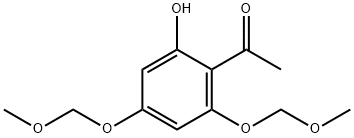 CAS号:65490-09-7
CAS号:65490-09-7 CAS号:121-33-5
CAS号:121-33-5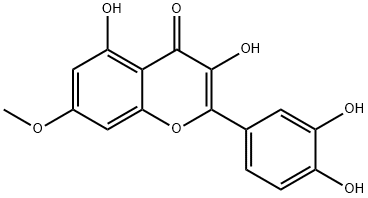 CAS号:90-19-7
CAS号:90-19-7 CAS号:652-67-5
CAS号:652-67-5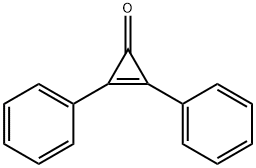 CAS号:886-38-4
CAS号:886-38-4 CAS号:29943-42-8
CAS号:29943-42-8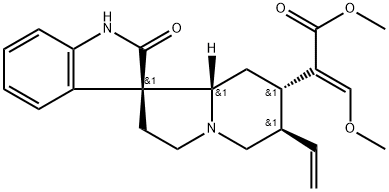 CAS号:51014-29-0
CAS号:51014-29-0 CAS号:122-84-9
CAS号:122-84-9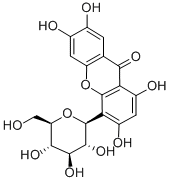 CAS号:24699-16-9
CAS号:24699-16-9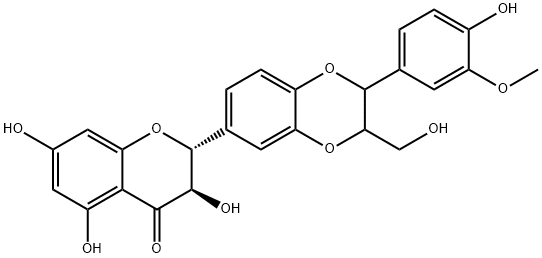 CAS号:72581-71-6
CAS号:72581-71-6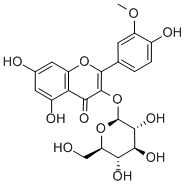 CAS号:5041-82-7
CAS号:5041-82-7 CAS号:38953-85-4
CAS号:38953-85-4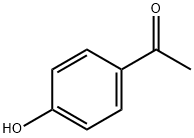 CAS号:99-93-4
CAS号:99-93-4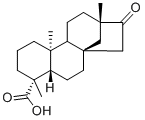 CAS号:27975-19-5
CAS号:27975-19-5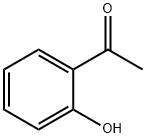 CAS号:118-93-4
CAS号:118-93-4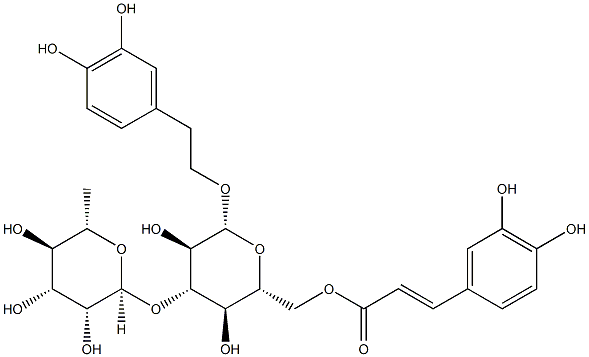 CAS号:61303-13-7
CAS号:61303-13-7 CAS号:6155-35-7
CAS号:6155-35-7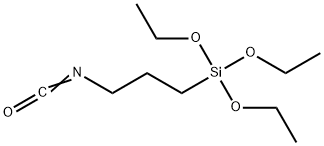 CAS号:24801-88-5
CAS号:24801-88-5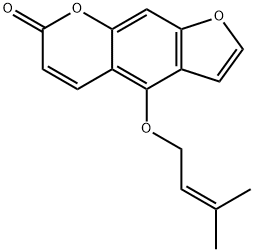 CAS号:482-45-1
CAS号:482-45-1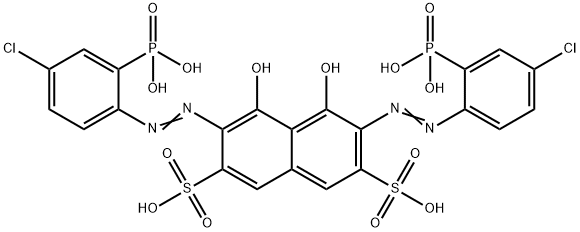 CAS号:1914-99-4
CAS号:1914-99-4